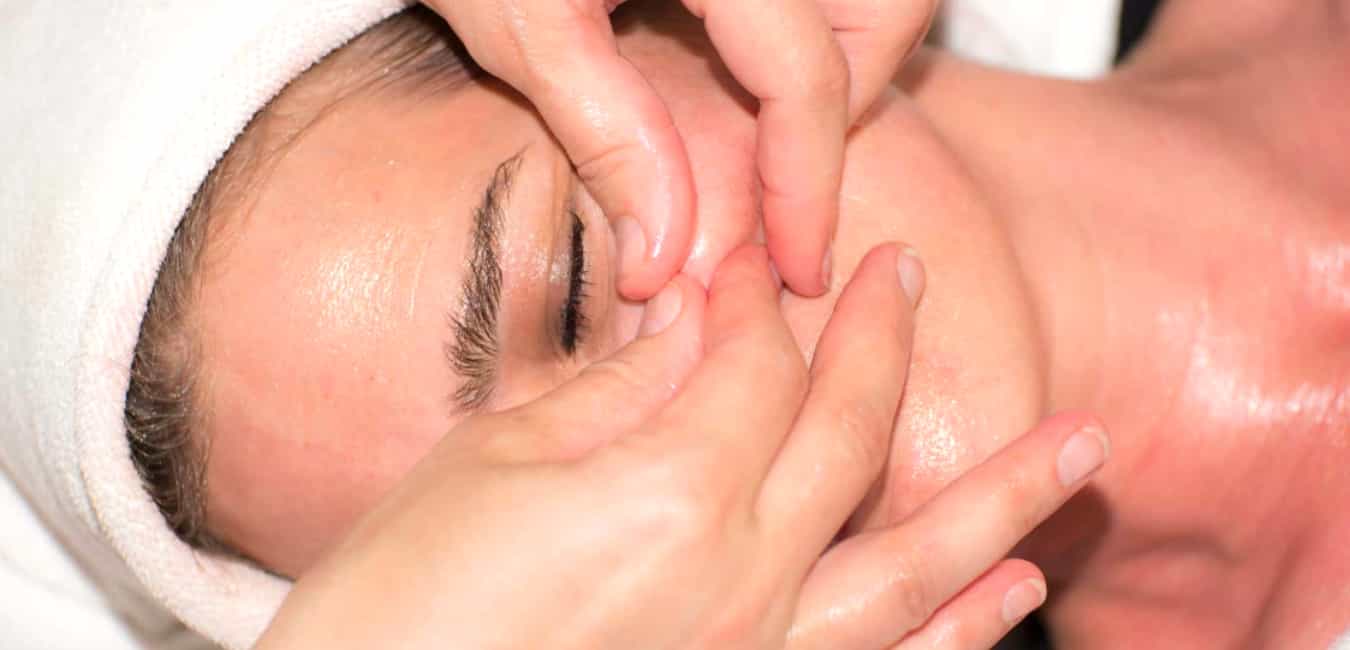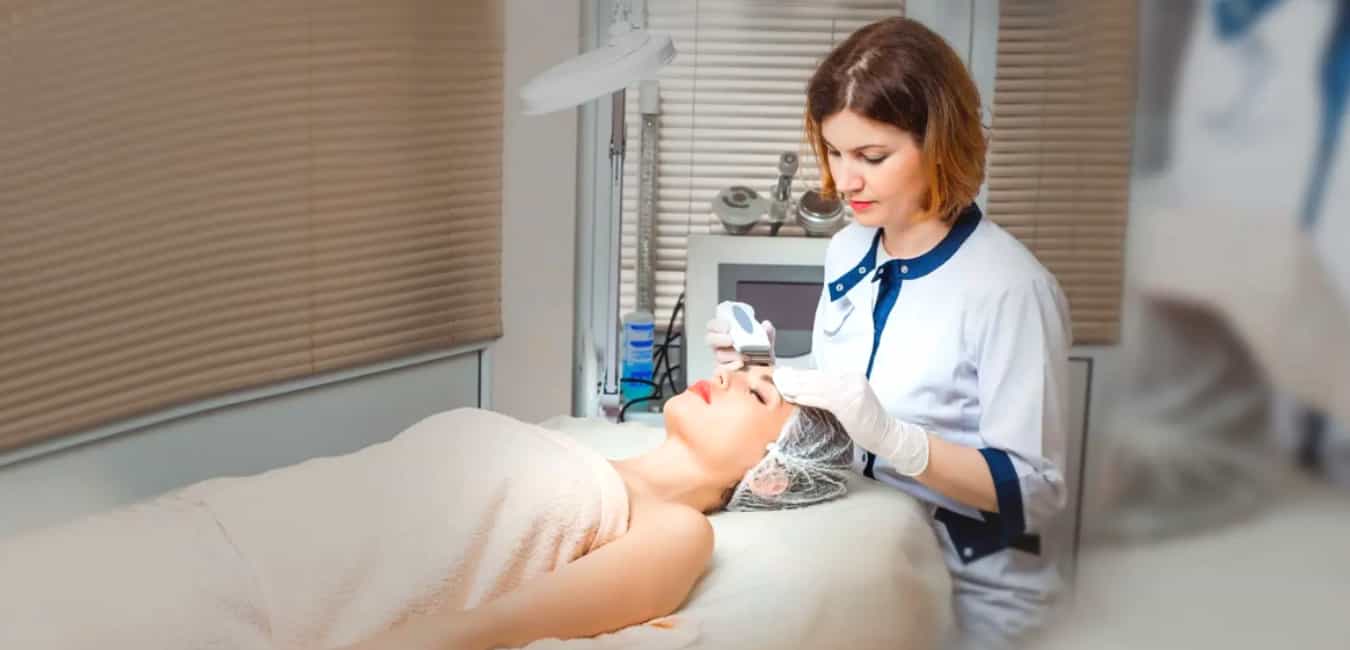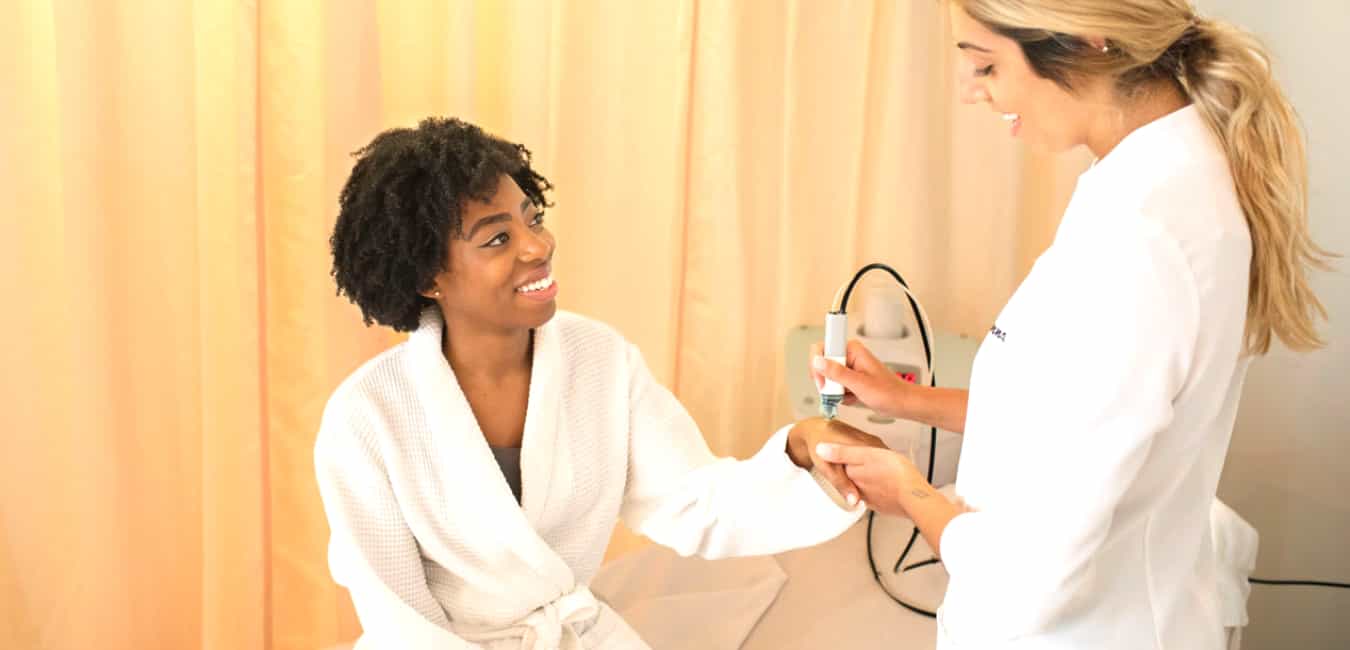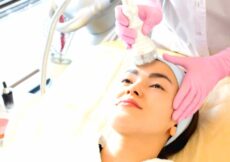A qualified medical esthetician is a skin care specialist who specializes in non-invasive cosmetic procedures. Unlike cosmetologists, who focus on the use of cosmetics and practice in a medical environment only occasionally, medical estheticians are distinct. While cosmetologists and aestheticians both apply cosmetics and perform beauty services, the knowledge of a medical esthetician in skin care is far more extensive.
These professionals offer a wide range of treatments, techniques, cosmetics, and consultations to assist clients and patients in maintaining and improving the beauty and health of their skin.
Medical aestheticians, a professional who has specialized in skin care, especially non-invasive cosmetic treatments, are trained and certified skin care specialists. They perform laser and light-based operations in conjunction with other medical professionals in medical settings. Their role is crucial in assisting patients with skin problems and injuries, elevating their service beyond mere beauty treatments to an integral part of patient care.
Table of Contents
What does a Medical esthetician do?
Licensed estheticians are gathering steam in the mainstream medical world as the demand for their expertise and knowledge in the field of skincare continues to grow. More skincare experts are finding jobs as medical estheticians in a range of locations as individuals who are currently licensed as estheticians enter the job market.
Medical estheticians offer their skincare knowledge and talents to the clinic. Their primary responsibility is to assist patients in learning how to care for their skin while undergoing medical treatment for a variety of diseases and ailments that affect skin appearance.

Medical estheticians now work at dermatologists’ offices, oncologists’ offices, and other medical settings. They could even be able to obtain work in hospitals. Their responsibilities will only differ somewhat depending on where they choose to work. In a dermatologist’s practice, a medical esthetician may spend most of their time scrubbing skin or treating abnormal cells.
Alternatively, they may employ restorative treatments for patients who are afflicted with various skin ailments or diseases. A medical esthetician in an oncologist’s clinic may be able to assist chemotherapy patients with skin that becomes sensitive as a result of the treatment. A medical esthetician might even work with burn sufferers to demonstrate how to disguise scarring with make-up.
Being a medical esthetician necessitates an interest in working with patients that require a compassionate, caring practitioner who can handle emotionally charged situations. Working as a medical esthetician for a population that can benefit from your unique abilities and experience can be quite fulfilling.
Medical aesthetician vs. Esthetician
Medical Esthetician
Estheticians typically assist clients with minor skin issues such as aging skin or dryness of the skin. These estheticians typically treat clients who have skin issues, such as burns, or trauma or assist patients who have undergone plastic surgery.

To get the degree estheticians must have to complete 600 hours of training to acquire their licensure. Skin problems, body hair removal, massages, facial cleansing, and salon administration will all be covered during their education. Medical aestheticians are often trained in the same areas as medical aestheticians, but they may also be trained in pre and post-surgical skin care, permanent makeup, eyelash extensions, advanced hair removal, and manual lymphatic drainage.
Spa Esthetician
Estheticians and medical aestheticians will have different professional paths. Spa estheticians will practice at a salon or spa, where they will do the jobs for which they were trained. They might also pursue a career as a beauty educator, which would entail traveling to different sites and instructing estheticians on various beauty products.
Cosmetic medical aestheticians are typically employed in hospitals or rehabilitation centers to assist patients who have experienced trauma or disease. Medical spa aestheticians usually operate in a salon or spa and aid clients with sun damage, chemical peels, tattoo removal, and varicose vein cauterization. A medical aesthetician may also work as a medical aesthetician training inspector, which entails visiting medical aesthetician training facilities.
Medical esthetician job description
Medical Estheticians give skin care treatments as well as cosmetics applications and purchasing consultations. Skin analysis, facial massages, and hair removal are among the operations performed.
A Medical Esthetician assists dermatologists and plastic surgeons with preoperative and postoperative examinations of patients. An associate’s degree may be required. In most cases, a Medical Esthetician responds to a supervisor. To practice, you must have a state license. Years of experience as a Medical Esthetician may be unclear. The most important criterion is certification and/or license in the position’s specialization.
Medical Esthetician Salary
In 2024, the salary of a medical esthetician in the United States can vary based on several factors, including location, experience, and type of employer. On average, a medical esthetician can expect to earn between $30,000 and $50,000 annually. More specifically, the average salary is reported as $48,000 per year, with salaries ranging from $38,500 to $63,100. The hourly wage for this profession averages around $15.00 per hour, ranging from $12.00 to $19.70.
Another source reports the average medical esthetician salary as $52,296 as of October 2024, with a typical range between $47,224 and $60,039. This suggests that the salary can vary significantly based on factors like education, certifications, additional skills, and years of experience in the profession.
According to Indeed, the national average salary for a medical esthetician is around $42,279 per year. This figure also varies based on factors like location, experience, education, and employer type. Medical estheticians may also receive benefits alongside their salary, such as 401(k) and health insurance.
It’s important to note that these figures are averages and can differ based on the specific circumstances of each individual.
How do you become a medical esthetician? – Step-by-Step Guide

STEP 1: EITHER COMPLETE A GED OR GRADUATE FROM HIGH SCHOOL (FOUR YEARS)
Applicants must pass high school or get a GED before enrolling in most medical esthetician programs. In order to prepare for this vocation, students need to focus on biology, chemistry, and anatomy classes.
Finally, courses in creative writing and psychology can help medical estheticians build talents that will aid them in performing their duties effectively.
STEP 2: FINISH A PROGRAM FOR A MEDICAL ESTHETICIAN (NINE MONTHS TO TWO YEARS)
The school, certificate, or degree determines the length of time it takes to complete a medical esthetician program. Certificate programs in cosmetology can be finished in as little as nine months at some cosmetology schools.
If you want to work as an esthetician, you should start with a two-year community college. Esthetician programs at community colleges can run up to two years if the student is seeking an associate degree. All courses include a combination of classroom lectures and hands-on instruction for students. Many schools require students to complete a certain number of experience hours and procedures in order to graduate.
STEP 3: APPLY FOR A STATE LICENSE (TIMELINE VARIES)
Estheticians must be licensed in all 50 states, irrespective of whether they are medical or not. Each state’s standards vary, but they always include completing a certain number of hours of clinical supervision and earning a degree or certificate. Most states require completing an exam to demonstrate proficiency in the field.
How Long Does it Take to Become a Medical Esthetician?
After graduating from high school, medical esthetician school can be finished in nine months to a year. It may take several months to obtain state licensure or certification.
Admissions Requirements for Medical Esthetician
Examine your state’s eligibility criteria.
- Select a medical cosmetology program that is appropriate for your objectives.
- While you’re getting your education, enjoy the benefits of internships and voluntary work.
- To become a licensed medical aesthetician, you must first have a bachelor’s degree in medical aesthetics.
- A high school diploma or GED certificate is required for entry into cosmetology school for an aspiring medical aesthetician. Relevant training programs, which can last up to nine months and lead to diplomas or associate degrees, are approved by each state’s board of cosmetology. Facials, microdermabrasion, specialized masks, and hair removal are among the skin care techniques covered by students.

While there are no formal educational requirements for medical aestheticians, some candidates supplement their aesthetician training with college-level biology, anatomy, and other science courses. Others might finish a 1,200-hour aesthetician training program.
Others may enroll in a 1,200-hour aesthetician training program to learn about the most recent scientific and technological developments. Although an aesthetic school education will prepare you for the licensure exam, working or volunteering in a medical setting will give you essential practical experience.
Obtain a License
In order to practice in the United States, medical aestheticians must be licensed. Candidates must complete an authorized cosmetology program and pass a state licensing examination that includes a written test and, in certain states, a practical test, however, standards vary by state.
Medical Esthetician Program Accreditation
The US Department of Education recognizes five medical esthetician school accreditation agencies. These organizations include:
The Accrediting Commission of Career Schools and Colleges (ACCSC), the Accrediting Council for Continued Education and Training (ACCET), the Council on Occupational Education (COE), and the National Accrediting Commission of Career Arts and Sciences are all organizations that accredit career schools and colleges (NACCAS).
Students should confirm that the program they are enrolled in is accredited since this guarantees a minimum level of educational quality as well as compliance with curriculum and content criteria. Although attendance at an authorized program is not necessary for licensing, it can help improve job applications and opportunities.
Medical Esthetician Career Alternatives
Spas Esthetician
One of the most common places for esthetician school graduates to find work is at a day spa. This work is classified as “conventional aesthetics,” which means it focuses on employing external ways to improve the appearance of the skin and face. Exfoliation, hydration, waxing, and other procedures are included in this package. Clients receive facials and waxing services from an esthetician in a day spa.
You may be able to advance to the position of day spa manager if you follow this career path.

Salons
Another option for estheticians is to work at a salon. In a traditional salon, however, you may discover that your options for providing services to clients are limited. Because salons are primarily focused on providing basic beauty services, you may expect to pay a premium for these services.
Because salons focus on basic beauty services, you’ll most likely focus on face waxing for your clients rather than facials and other skin treatments.
It’s a good idea to earn your esthetician certification and a cosmetology license if you want to work in a salon. You’ll be able to offer waxing and hair styling to your clientele as a result of this.
Esthetics in Medicine
If the standard aesthetic tasks outlined above don’t appeal to you, a career in medical aesthetics can be a good fit. This is a different career path than working at a day spa or salon, and you may need additional training, such as esthetician laser training. Estheticians that pursue this professional path frequently work in plastic surgery.
Plastic surgery offices and dermatological clinics are common employers for estheticians on this path.
Advanced facials, chemical peels, laser hair removal, microdermabrasion, and laser skin rejuvenation are just a few of the procedures you’ll be performing in these positions. You can also be in charge of assisting a dermatologist or plastic surgeon in preparing the client’s skin for injection or another surgery.

Because these treatments are more medically related, you’ll also need to engage in client education and give post-procedure recovery and home care suggestions.
Managing a Company
Finally, as an esthetician, you can open your own practice center. Because medical aesthetics necessitates the presence of a physician, this usually works best in the traditional aesthetics area.
However, esthetician training is an excellent place to start if you want to open your own day spa or salon. Of course, there are a lot of initial fees associated with opening a physical location—but don’t let that deter you!
These days, mobile spas and salons are in vogue. You can bring the spa treatments to your clients’ homes and provide them facials and other services. This has cheaper start-up costs and is an excellent approach to expanding your client base.
Top Medical Esthetician Schools
| Rank | School Name |
|---|---|
| 1 | Boca Beauty Academy |
| 2 | Evergreen Beauty and Barber College-Everett |
| 3 | Bellus Academy-Poway |
| 4 | Acaydia School of Aesthetics |
| 5 | New Dimensions Beauty Academy Inc |
| 6 | Academy of Massage and Bodywork |
| 7 | The Esthetic Institute |
| 8 | Bellus Academy-El Cajon |
| 9 | Avalon School of Cosmetology-Layton |
| 10 | The Chrysm Insitute of Esthetics |
| 11 | Dermal Science International Aesthetics and Nail Academy |
| 12 | Victoria’s Academy of Cosmetology |
What is a Medical Esthetician? – Conclusion
Some people, particularly those who want to work alongside healthcare professionals, consider continuing their education by completing further training programs that allow them to do procedures such as dermaplaning, laser hair removal, and other similar procedures.
When you’re ready to start looking for jobs, having additional skills and certification will open more doors for you and improve your chances of getting employed!
![What is a Medical Esthetician [Learn from a Skincare Pro]](https://estheticianschools.net/wp-content/uploads/2023/11/What-is-a-Medical-Esthetician-Learn-from-a-Skincare-Pro-735x350.webp)


